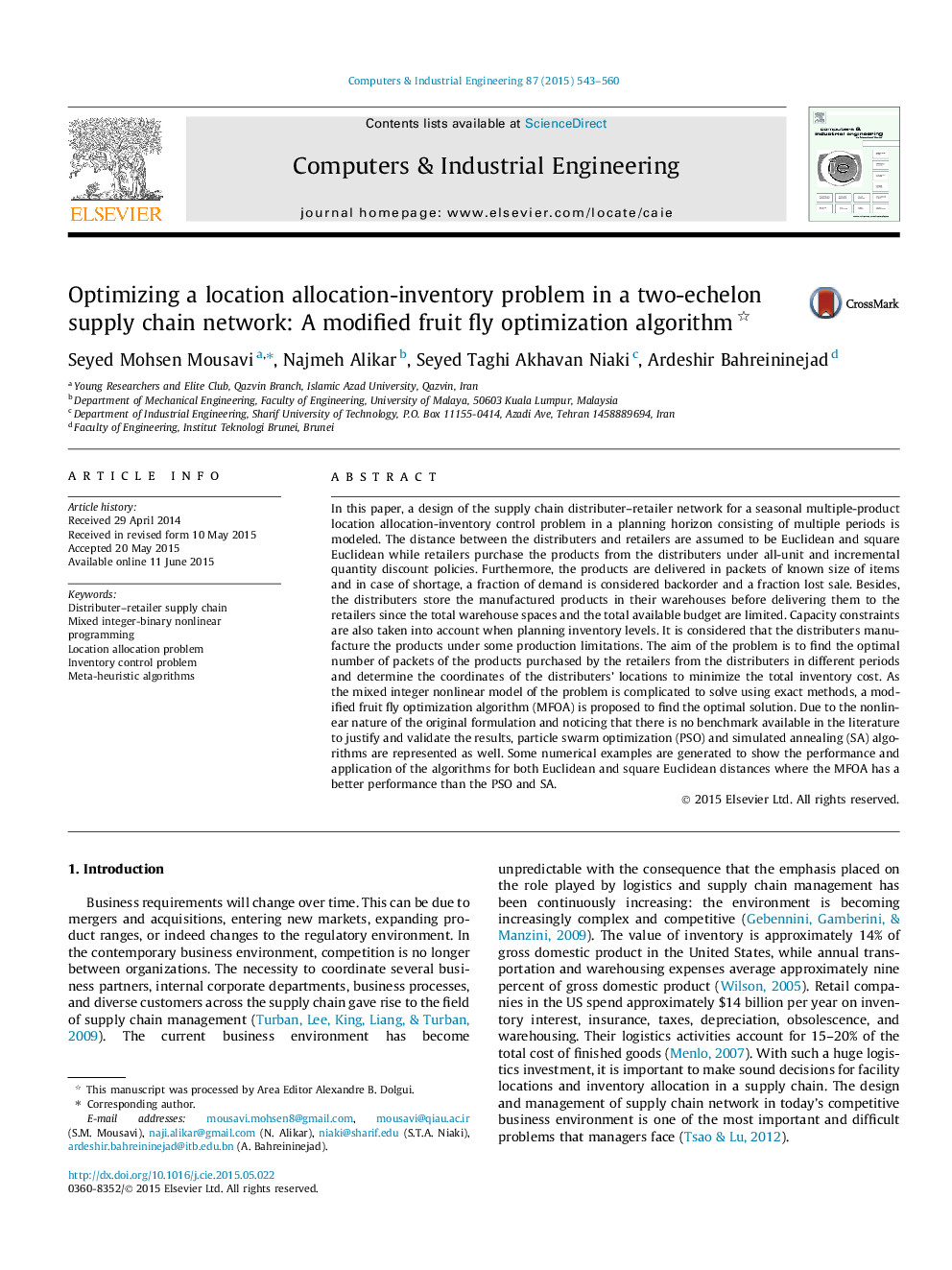| Article ID | Journal | Published Year | Pages | File Type |
|---|---|---|---|---|
| 1133586 | Computers & Industrial Engineering | 2015 | 18 Pages |
•A distributer–retailer network for a location allocation-inventory control problem is derived.•The distance between the distributers and retailers are to be Euclidean and square Euclidean.•The products are purchased under AUD and IQD discount policies.•The goal is to find the optimal number of packets and the distributers’ locations.•A modified fly fruit optimization algorithm is used to solve the problem.
In this paper, a design of the supply chain distributer–retailer network for a seasonal multiple-product location allocation-inventory control problem in a planning horizon consisting of multiple periods is modeled. The distance between the distributers and retailers are assumed to be Euclidean and square Euclidean while retailers purchase the products from the distributers under all-unit and incremental quantity discount policies. Furthermore, the products are delivered in packets of known size of items and in case of shortage, a fraction of demand is considered backorder and a fraction lost sale. Besides, the distributers store the manufactured products in their warehouses before delivering them to the retailers since the total warehouse spaces and the total available budget are limited. Capacity constraints are also taken into account when planning inventory levels. It is considered that the distributers manufacture the products under some production limitations. The aim of the problem is to find the optimal number of packets of the products purchased by the retailers from the distributers in different periods and determine the coordinates of the distributers’ locations to minimize the total inventory cost. As the mixed integer nonlinear model of the problem is complicated to solve using exact methods, a modified fruit fly optimization algorithm (MFOA) is proposed to find the optimal solution. Due to the nonlinear nature of the original formulation and noticing that there is no benchmark available in the literature to justify and validate the results, particle swarm optimization (PSO) and simulated annealing (SA) algorithms are represented as well. Some numerical examples are generated to show the performance and application of the algorithms for both Euclidean and square Euclidean distances where the MFOA has a better performance than the PSO and SA.
